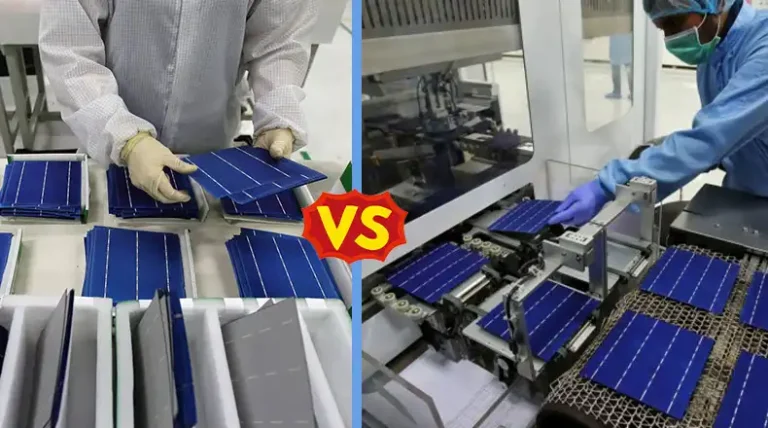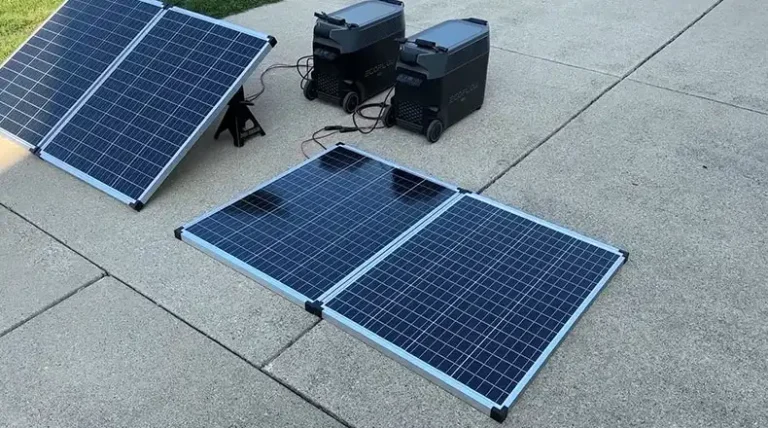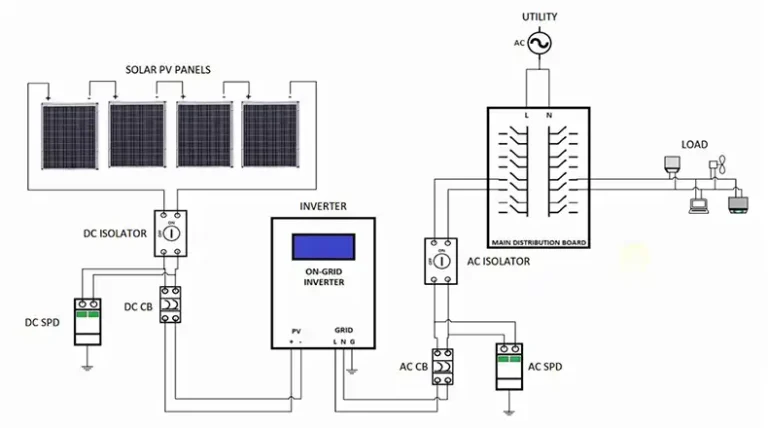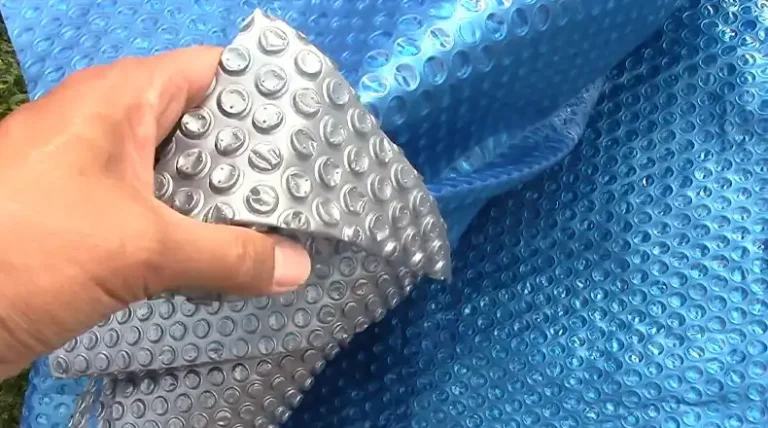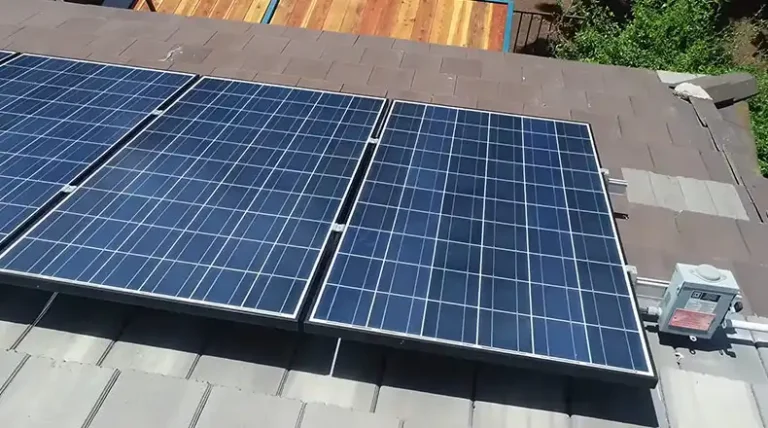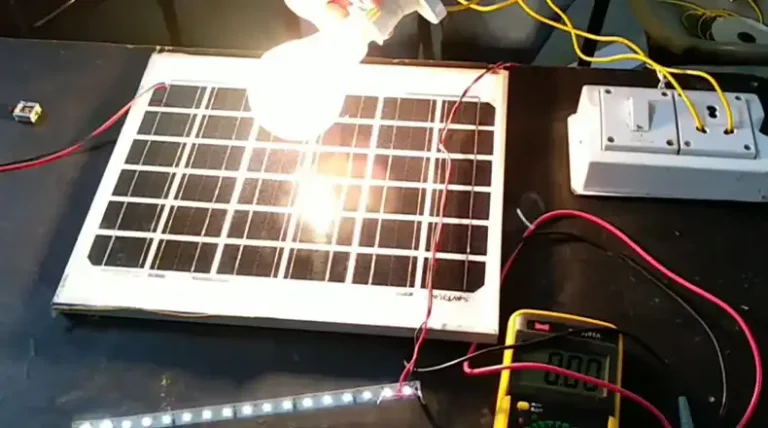How to Set Up an EcoFlow Solar Panel? (Complete Guide)
Solar energy is rapidly emerging as a viable and attractive option for powering homes and businesses. This article explores the process of installing a solar panel system, outlining the key steps involved. By understanding the process, you can make informed decisions about harnessing the power of the sun for your energy needs.
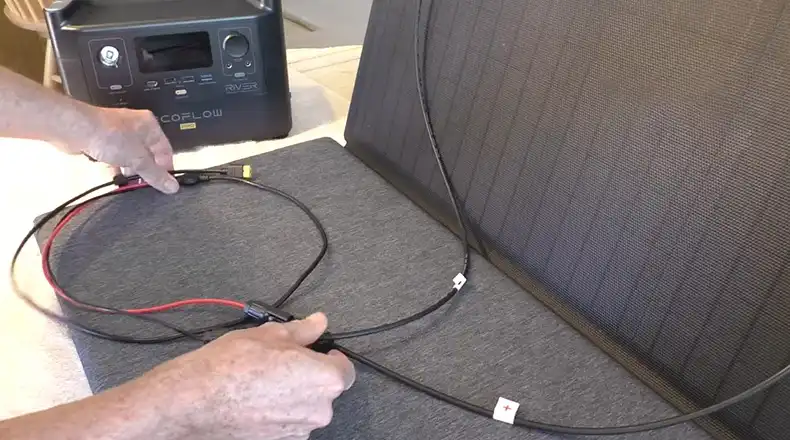
How Do You Set Up an EcoFlow Solar Panel?
Ready to wave goodbye to those sky-high utility bills? Let’s set up your very own EcoFlow solar panel system and take control of your energy!
Step 1: Calculate Power Load
Before proceeding with system selection, it’s important to assess your daily energy needs. This will ensure your EcoFlow system is appropriately sized to meet your power demands.
The unit of measurement for energy consumption is watt-hours (Wh). While the term may sound technical, calculating your daily Wh usage is a straightforward process. Here’s a step-by-step guide –
1. Create a list of all the appliances and electronic devices you use regularly. Include everything from televisions and lights to smaller appliances like a mini-fridge. Additionally, locate the wattage rating for each item. This information is typically printed on a label affixed to the appliance itself or found within the user manual.
2. Estimate the average daily usage time for each appliance. Be realistic in your assessment.
3. Perform a simple calculation to determine the daily watt-hours consumed by each appliance. Multiply the wattage rating by the average daily usage time in hours. This will provide the daily Wh usage for that specific item.
Suppose, if your refrigerator wattage rating is 200W and it’s average daily usage time is 12 hours, it’s Wh will be (200W x 12 hours =) 2400 Wh.
4. Sum the daily Wh usage values for all your appliances. This cumulative figure represents your total daily energy consumption in watt-hours.
NOTE: If you prefer to avoid manual calculations, you can get your average household consumption on your utility bill. Locate the section displaying your monthly or annual energy usage in kilowatt-hours (kWh).
Step 2: Choose Your EcoFlow Solar Panel Array
Now that you know how much power you need, it’s time to pick your solar panel array. EcoFlow offers a variety of panel options with different wattages, so you can find the perfect fit for your energy needs.
When making your choice, consider the production ratio of the solar panels. This ratio indicates how much energy the panel can produce based on its wattage rating. For example, a 100W solar panel with a production ratio of 1.2 can generate approximately 120Wh of energy per day (100W x 1.2) under ideal conditions.
To determine the appropriate solar panel array size, divide your total daily energy consumption (calculated in Step 1) by the production ratio of the solar panels you’re considering. This will give you an estimate of the total wattage you need from your solar panel array.
For instance, if your daily energy consumption is 2,000 Wh and you choose solar panels with a production ratio of 1.2, you would need a solar panel array with a total wattage of approximately 1,667W (2,000Wh ÷ 1.2).
Step 3: Select the EcoFlow Portable Power Station
Following the selection of your solar panel array, a compatible portable power station is required for energy storage. EcoFlow offers a range of portable power stations utilizing lithium-ion batteries. These batteries offer long-lasting performance.
Remember, it’s important to choose a power station whose battery capacity is sufficient to store the energy generated by your solar panel array.
Let’s say your daily power consumption is 2880Wh. So, you’d want an EcoFlow portable power station with a battery capacity greater than 2880Wh. For example, the EcoFlow DELTA Pro offers a 3600Wh capacity.
Step 4: Gather Necessary Tools
Now that you’re about to get into the installation process, make sure you have the necessary tools on hand. You’ll typically need –
- Wire stripper
- Crimper
- Screwdrivers (flat-head and Phillips-head)
- Wrenches or pliers (depending on your mounting hardware)
- Drill (if mounting on a surface)
Refer to the EcoFlow manual for specific tool recommendations based on your chosen components.
Step 5: Mount the Solar Panel
Now it’s time to give your solar panel a permanent home. Choose a location that gets plenty of sunlight throughout the day. For optimal energy production, position your solar panels facing south (in the northern hemisphere) or north (in the southern hemisphere).
You’ll also want to adjust the tilt angle of your panels based on your latitude – a good rule of thumb is to set the tilt angle equal to your latitude for maximum sun exposure.
EcoFlow provides specific mounting recommendations based on the solar panel model you choose, so be sure to check their website or manual. Follow their instructions carefully to ensure a secure and stable installation.
Step 6: Connect the Solar Panel(s) to the Power Station
This is where the magic happens! Locate the appropriate input port on your EcoFlow power station (consult the manual for the exact location and port type).
Using the provided cables or any additional cables you purchased, connect your solar panel(s) to the input port on the power station. Follow the manual’s instructions carefully, ensuring all connections are secure and properly terminated.
If you’re connecting multiple solar panels, make sure to wire them in the recommended configuration (series or parallel) based on the power station’s specifications.
Step 8: Power On and Monitor Charging
Time to flip the switch and witness the power of the sun! Turn on your EcoFlow power station, and it should automatically detect and begin charging from your solar panel(s).
Keep an eye on the charging status and input power on the power station’s display or companion app (if available). Most EcoFlow power stations provide real-time monitoring of the charging process, allowing you to track the amount of energy being generated and stored.
Step 9: Optimize Solar Generation (Optional)
If you’re feeling extra ambitious, you can optimize your solar generation by adjusting the panel angle throughout the day for maximum sun exposure. This can be done manually or, in some cases, with the help of automated tracking systems offered by EcoFlow. Additionally, keeping your panels clean can ensure optimal efficiency.
Is There Anything Else to Consider While Setting Up EcoFlow Solar Panel?
While we’ve covered the essential steps for setting up your EcoFlow solar panel system, there are a few additional factors to keep in mind to ensure a smooth and efficient installation process.
a) Shading can significantly impact the performance of your solar panels. Even a small amount of shade can drastically reduce the energy output of the entire system. When choosing the location for your solar panels, carefully assess the potential for shading throughout the day from nearby trees, buildings, or other obstructions.
b) Different weather and climate conditions can affect the performance and lifespan of your solar panel system. When selecting your EcoFlow solar panels, make sure they are rated for the specific weather conditions in your area. Additionally, consider investing in protective coverings or mounting systems designed to withstand harsh environmental factors.
c) As your energy needs evolve or your commitment to sustainable living grows, you may want to consider the possibility of expanding your EcoFlow solar panel system in the future. When planning your initial installation, factor in potential future expansion requirements.
Wrapping It Up
At this point, you can successfully set up your EcoFlow solar panel system. This means you’re generating clean energy for your home and reducing your reliance on the grid. That’s a win for the environment and your wallet! If you have any questions or want to share your solar setup experience, feel free to leave a comment below. Let’s all work together for a more sustainable future!
Related FAQs
Can I use my EcoFlow solar panel system to power my entire home?
Absolutely! EcoFlow offers expandable solar generators like the DELTA Pro Ultra that can power your entire home with enough solar panels and battery storage. You can gradually add more panels and batteries to reach your energy needs.
How long do EcoFlow solar panels last?
EcoFlow solar panels boast a lifespan of 25-30 years, delivering clean energy for decades! Efficiency may decline slightly, but they’ll still produce around 80% of their original power after 25 years. For optimal performance, keep them clean, avoid damage, and consider monitoring systems for early issue detection.
Is it difficult to maintain an EcoFlow solar panel system?
Maintaining your EcoFlow solar panel system is easy! Regular cleaning and checks will keep it running smoothly for years. The EcoFlow manuals provide clear instructions for any maintenance your system might need.

